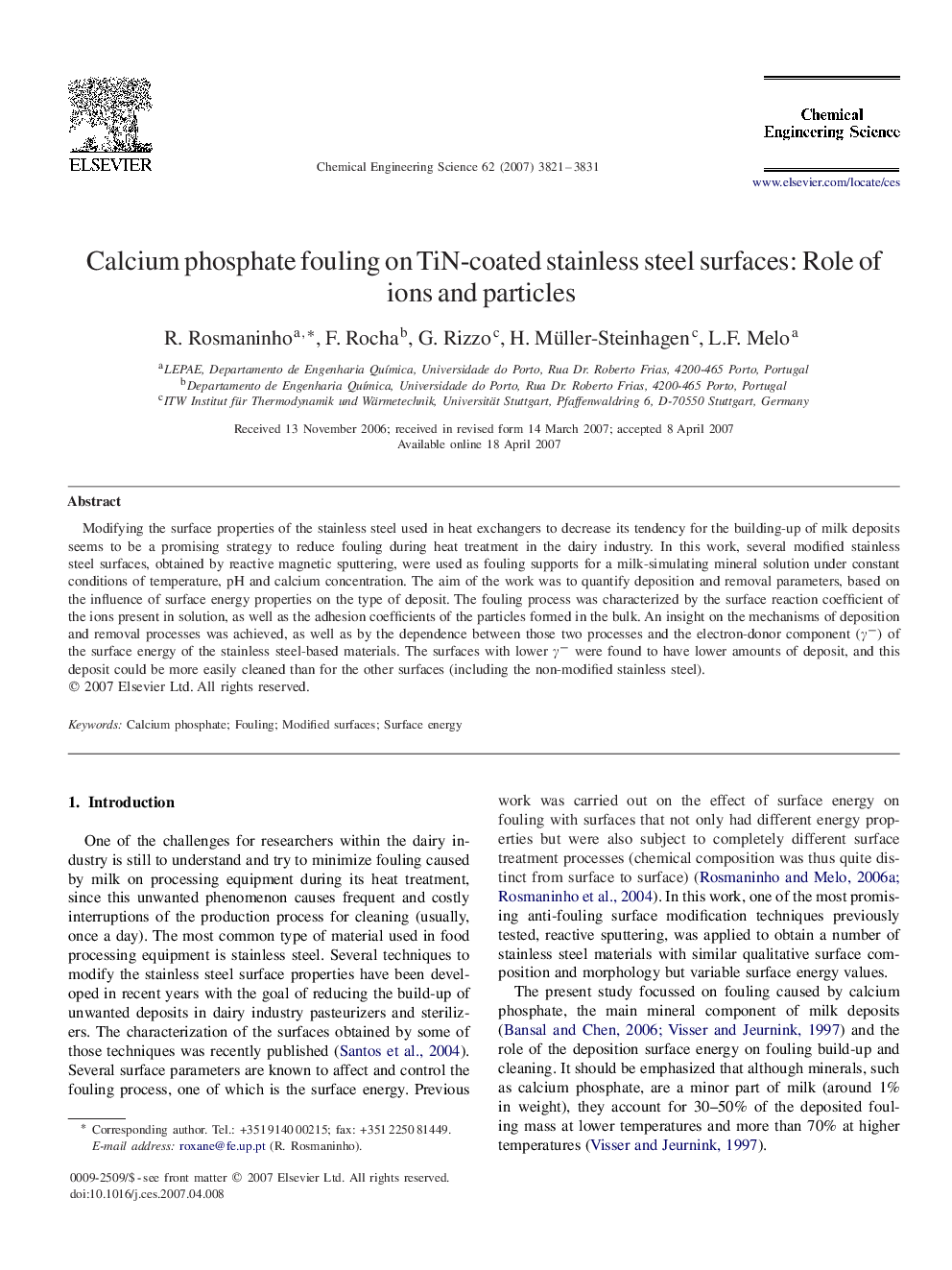| Article ID | Journal | Published Year | Pages | File Type |
|---|---|---|---|---|
| 158282 | Chemical Engineering Science | 2007 | 11 Pages |
Modifying the surface properties of the stainless steel used in heat exchangers to decrease its tendency for the building-up of milk deposits seems to be a promising strategy to reduce fouling during heat treatment in the dairy industry. In this work, several modified stainless steel surfaces, obtained by reactive magnetic sputtering, were used as fouling supports for a milk-simulating mineral solution under constant conditions of temperature, pH and calcium concentration. The aim of the work was to quantify deposition and removal parameters, based on the influence of surface energy properties on the type of deposit. The fouling process was characterized by the surface reaction coefficient of the ions present in solution, as well as the adhesion coefficients of the particles formed in the bulk. An insight on the mechanisms of deposition and removal processes was achieved, as well as by the dependence between those two processes and the electron-donor component (γ-)(γ-) of the surface energy of the stainless steel-based materials. The surfaces with lower γ-γ- were found to have lower amounts of deposit, and this deposit could be more easily cleaned than for the other surfaces (including the non-modified stainless steel).
